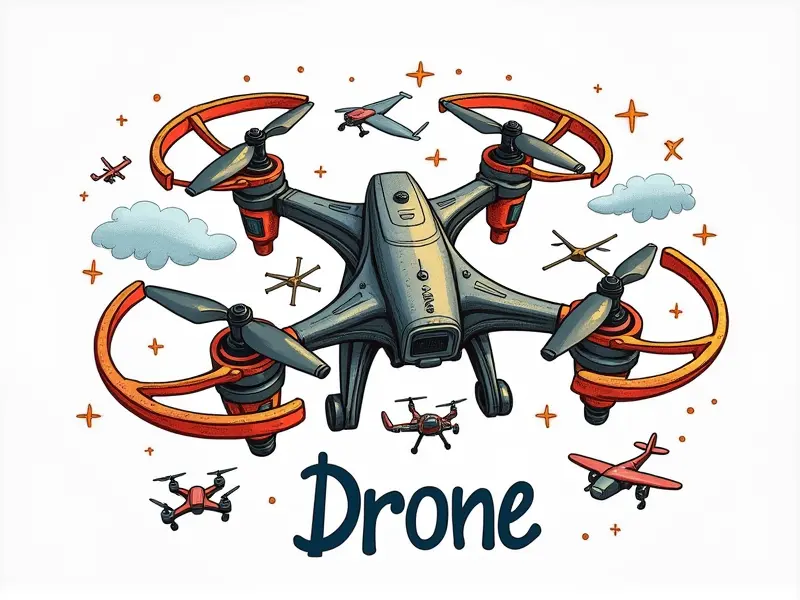Can a drone carry a payload?

Can Drones Lift Heavy Loads?
Drones, also known as unmanned aerial vehicles (UAVs), have become increasingly popular in various industries due to their ability to perform tasks efficiently and safely. One of the most critical aspects of drone technology is its payload capacity—the amount of weight a drone can carry during flight. This article explores whether drones can lift heavy loads and delves into specific types of drones, such as RC quadcopters, helis, airplane drones, and FPV racing drones.
Max Load for RC Quadcopters & Helis
The payload capacity of an RC (remote-controlled) quadcopter or helicopter is determined by several factors including battery power, propeller size, motor strength, and frame design. For instance, a typical consumer-grade quadcopter can carry payloads ranging from 50 grams to a few kilograms. High-end models designed for professional use might have the capability to lift heavier loads, often up to 10-20 kg.
Factors Affecting RC Quadcopters & Helis Payload
- Battery Capacity: Larger batteries provide more power but also add weight.
- Motor Power: Stronger motors can handle heavier payloads, but they require robust frames and efficient cooling systems.
- Airframe Design: The aerodynamics of the drone's frame play a crucial role in determining its lift capabilities.
Payload Capacity in Drones Explained
The payload capacity of a drone is not just about lifting weight; it also involves how that weight affects flight duration, stability, and maneuverability. Payloads can range from cameras for aerial photography to sensors for surveying land or monitoring environmental conditions.
- Camera Systems: High-resolution cameras with gimbal stabilization systems are common payloads.
- Sensors & Instruments: Drones can carry a variety of sensors like thermal, LiDAR, or multispectral devices for scientific research and agriculture.
Drone Delivery Services: Payload Facts
The rise of drone delivery services has sparked interest in the capabilities of drones to transport goods. Companies such as Amazon Prime Air are exploring the potential of using drones to deliver packages weighing up to 5 pounds within a range of 10 miles.
- Regulatory Compliance: Drone delivery services must adhere to strict regulations set by aviation authorities concerning payload limits and operational zones.
- Delivery Range & Speed: The distance and speed at which drones can deliver payloads are also critical factors influencing the feasibility of drone deliveries.
Small Drone Payloads: What's Possible?
For hobbyists and small-scale commercial users, smaller drones with limited payload capacities offer flexibility and ease of use. These drones typically carry lightweight cameras or sensors for personal projects or local surveys.
- Hobbyist Use: Small drones are popular among enthusiasts who want to capture aerial footage or conduct basic mapping tasks.
- Commercial Applications: Businesses may use these drones for short-range inspections, such as roof checks or small-scale agriculture monitoring.
Airplane Drones: Transporting Heavy Gear
Fixed-wing drones, often referred to as airplane drones, have unique advantages when it comes to carrying heavy payloads over long distances. These drones can transport heavier equipment due to their aerodynamic design and ability to fly at higher altitudes.
- Aerodynamics: Fixed-wing drones are designed for efficient flight over large areas, making them ideal for transporting cargo.
- Endurance: With larger fuel tanks or battery packs, these drones can maintain flight for extended periods.
RC Helicopter Load Limitations Unveiled
While RC helicopters are capable of lifting significant payloads compared to quadcopters, they face limitations due to their complex design and higher power requirements. They typically carry heavier cameras or specialized equipment but require skilled operators.
- Maintenance: Helicopters often need more maintenance than other types of drones due to the complexity of their mechanical systems.
- Operator Skill Level: Operating an RC helicopter requires a high level of skill and experience, which can be a barrier for some users.
Max Weight for FPV Racing Drones
First-person view (FPV) racing drones are designed for speed and agility rather than payload capacity. However, they can carry small cameras or other lightweight equipment to enhance the racing experience.
- Speed: The primary focus of FPV racing drones is on achieving high speeds and quick maneuvers.
- Lightweight Design: These drones are built with minimal weight to maximize performance, limiting their payload capacity.
Payload Challenges in Drone Tech
Despite the advancements in drone technology, there are still challenges associated with carrying heavy payloads. Issues such as battery life, stability during flight, and regulatory constraints often limit the capabilities of drones when it comes to lifting heavier objects.
- Battery Life: Carrying a payload decreases flight time significantly due to increased power consumption.
- Regulatory Hurdles: Many countries have strict regulations regarding the weight and size of payloads that drones can carry.
Quadcopter Payload Capabilities Revealed
The payload capacity of quadcopters varies widely based on their design and intended use. High-end models used in professional settings often feature enhanced battery systems, stronger motors, and larger propellers to accommodate heavier loads.
- Professional Models: Drones designed for commercial applications can lift payloads up to 20 kg or more.
- Hobbyist Models: Consumer-grade quadcopters typically have a payload capacity of around 1-5 kg.
Payload Impact on Drone Performance
The addition of a payload to a drone affects its performance in several ways. Increased weight reduces flight time, impacts stability, and can limit the range of motion available for maneuvering.
- Flight Time: Carrying a heavier payload significantly decreases battery life, reducing overall flight duration.
- Mobility: Heavier drones are less agile and may struggle to perform complex maneuvers required in certain environments.
Conclusion
In conclusion, the ability of a drone to carry a payload depends on various factors including its design, intended use, and regulatory environment. While some drones can lift relatively heavy loads for specific applications such as surveying or delivery services, others are better suited for lightweight tasks like aerial photography or racing. Understanding these limitations is crucial for users looking to maximize the potential of their drone technology.

